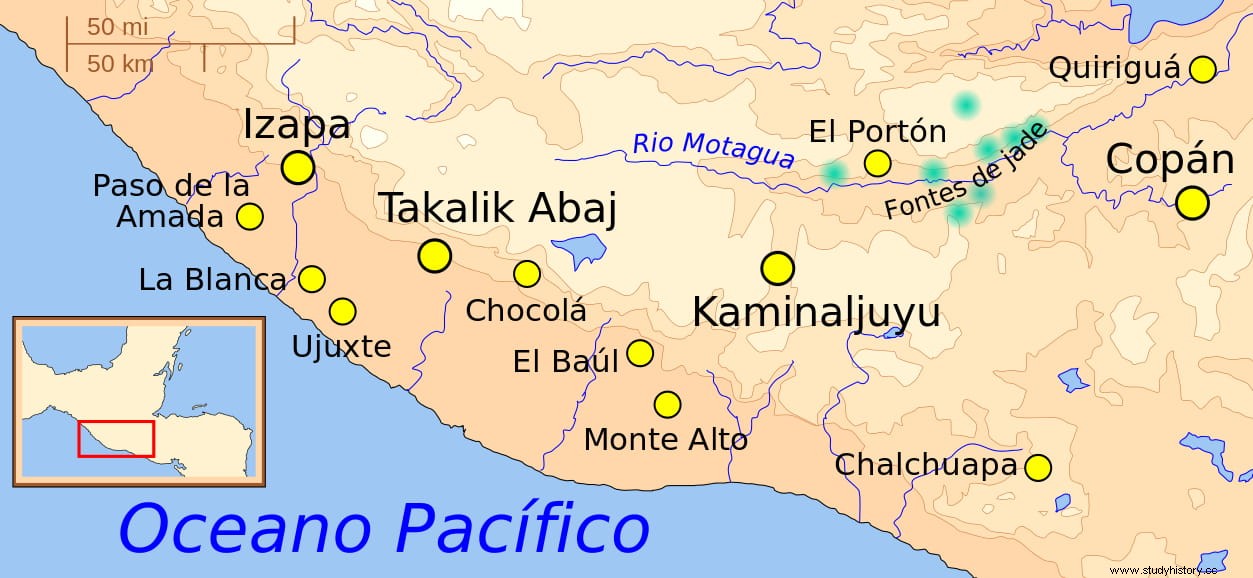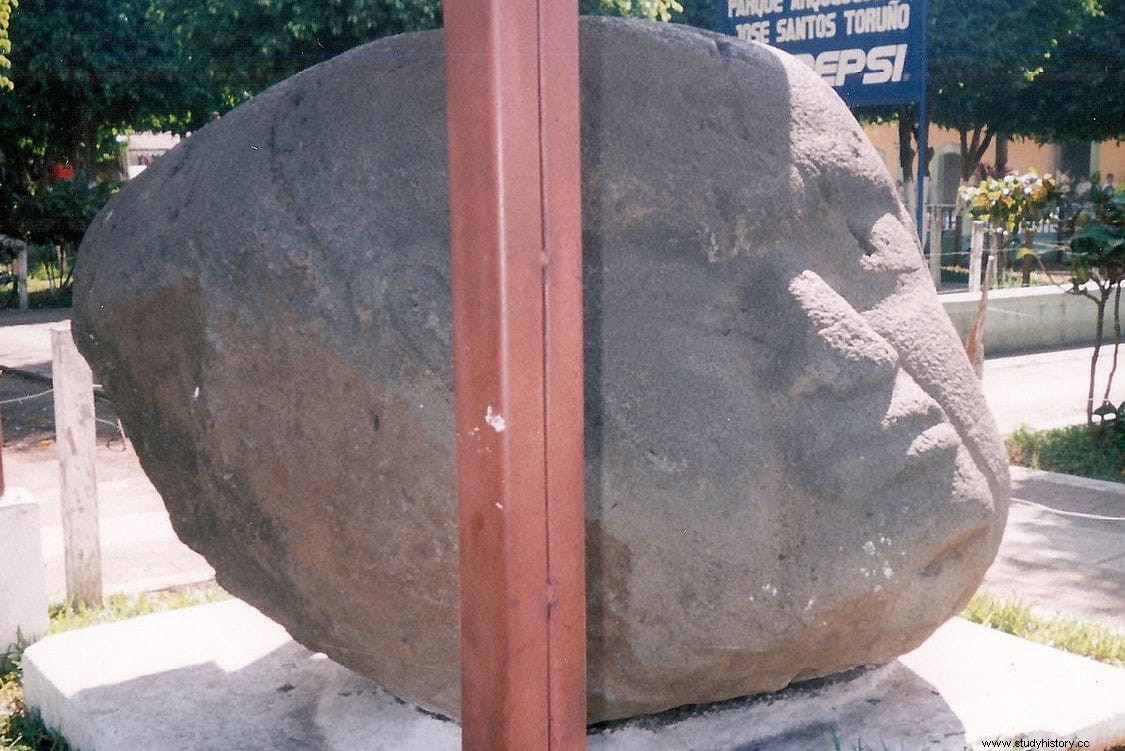In February 1976 archaeologists found a carved turtle head that has magnetic properties in the ceremonial center of Izapa in the coastal plain of the State of Chiapas in Mexico. Radiocarbon dating gave that sculpture a date of 1500 B.C.
Some 150 km to the southeast, in the ancient ceremonial center of Monte Alto in Guatemala, much more primitive sculptures were later found that can be precisely dated to around 2000 BC. They are the famous heads and potbellies , belonging to the Monte Alto culture, one of the oldest in Mesoamerica and probably prior to the Olmec culture.
During investigations in 1979 it was discovered that many of the sculptures at Monte Alto are magnetic. To the extent that certain distinctive patterns of magnetism recur with some frequency, it seemed that the sculptures were created by craftsmen who were aware of these properties. If so, the Monte Alto sculptures should be recognized as the oldest known magnetic artifacts in the world.

Since both the heads and bodies are rather roughly shaped from large rounded basalt blocks, the subjects have a corpulent appearance. That is why they have been called pot-bellied . From the pot-bellied collection from Monte Alto on display in the municipal park of La Democracia, Guatemala and in front of their local museum, four of the heads and three of the bodies have magnetic properties.
All four heads have a north magnetic pole located at their right temples, while three of them have south magnetic poles below the right ear, and the fourth (the one facing the museum) has a south magnetic pole at its left temple. According to the researchers, it is unlikely that such a pattern is due to chance.
Of the three potbellies , two have their north and south magnetic poles located less than 10 centimeters from each other, near the navel (specifically, between the fingertips of the hands that hug the more rounded parts of the abdomen). The third has its north magnetic pole located at the back of the neck.

The similarity of the locations of the magnetic poles suggested that the sculptors were aware of their presence.
A study published by researchers from Harvard and Yale Universities, the California Institute of Technology and the National Institute of Seismology, Volcanology, Meteorology and Hydrology of Guatemala in 2019, confirms that the apparently intentional coincidence of carved anatomical features and pre-existing magnetized regions implies that the sculptors were able to detect the presence of magnetic fields in the rocks .
Magnetometers were used to map the distribution of magnetization in eleven of the potbellies from Monte Alto. The results revealed, for the first time, that the sculptures were originally magnetized by lightning strikes before the carving process, and that the correspondence between the magnetic anomalies of the sculptures and the carved anatomical features is not random. All this is consistent with the conclusions of the 1976 study.
According to the researchers, this new evidence reinforces the understanding of the knowledge of magnetism in pre-Hispanic Mesoamerica.
